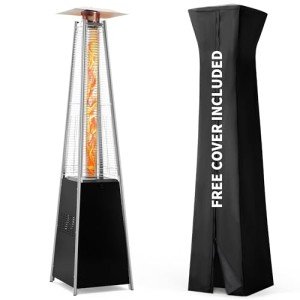The Ultimate Cheat Sheet On Best Buy Fireplace Heater

Finding the Perfect Fireplace to Buy: A Comprehensive Guide
Fireplaces have long been a sign of heat, convenience, and home. Today, they serve not just as functional heating sources however likewise as striking design elements that elevate the aesthetic of any home. With the expansion of styles, fuels, and technological features, buying a fireplace can feel overwhelming. In this guide, we will explore different kinds of fireplaces, the factors to consider for purchasing, and the benefits of having one in your house.
Kinds of Fireplaces
Before diving into how to select the right fireplace, it's vital to comprehend the different types readily available on the marketplace. Below is a comprehensive contrast table of the most typical kinds of fireplaces:
| Type | Fuel Source | Installation | Upkeep Needs | Typical Cost Range |
|---|---|---|---|---|
| Wood-Burning | Wood | Requires chimney | High; regular cleaning | ₤ 2,500 - ₤ 5,000 |
| Gas Fireplace | Gas or lp | Vented or ventless | Medium; annual checkup | ₤ 1,500 - ₤ 4,000 |
| Electric Fireplace | Electrical power | Plug-in or built-in | Low; occasional dusting | ₤ 200 - ₤ 3,500 |
| Pellet Stove | Wood pellets | Needs venting | Medium; routine cleansing | ₤ 2,000 - ₤ 4,000 |
| Ethanol Fireplace | Bioethanol | No venting required | Extremely low; tidy glass routinely | ₤ 300 - ₤ 2,500 |
1. Wood-Burning Fireplaces
Wood-burning fireplaces are the timeless choice, stimulating a traditional ambiance. Nevertheless, they require appropriate chimney installation and maintenance to guarantee safety. The cost can be on the greater side due to these needs.
2. Gas Fireplaces
Gas fireplaces use convenience and performance. They can be vented or ventless, depending upon your space. While gas alternatives tend to be more expensive upfront, they typically require less upkeep than wood-burning designs.
3. Electric Fireplaces
Electric fireplaces are versatile and can be placed anywhere in the home, as they just require a power outlet. They can quickly act as an additional heating source and come in various styles, from wall-mounted to freestanding units.
4. Pellet Stoves
Pellet ranges burn compressed pellets made from wood and other products. They require a power supply for operation and normally have a higher initial expense but deal fantastic fuel performance and ease of usage.
5. Ethanol Fireplaces
Ethanol fireplaces are contemporary and stylish, operating without a chimney. They offer a clean-burning alternative for those who appreciate aesthetic appeals over heat output. However, they may not appropriate for heating bigger locations.
Secret Considerations When Purchasing a Fireplace
When selecting a fireplace, consider the following elements:
1. Home Size and Layout
- Open Spaces: Large open locations take advantage of powerful units like wood or pellet stoves.
- Smaller sized Rooms: Electric or ethanol designs might suffice for intimate spaces.
2. Fuel Source
- Choose based on accessibility to fuel types (wood, gas, electric) and your way of life (maintenance, convenience).
3. Heating Needs
- Figure out the heating requirements for your area. Fireplaces On Sale might be essential for larger spaces.
4. Local Regulations
- Ensure your fireplace abides by regional building regulations and guidelines, as some districts may implement restrictions on specific types.
5. Aesthetic Appeal
- Choose a style and surface that matches your home design, whether it's traditional, modern-day, or rustic.
Benefits of Having a Fireplace
The advantages of having a fireplace in your house are various. Here are some crucial benefits:
- Comfort and Coziness: Fireplaces create a warm environment, ideal for events or peaceful nights.
- Increased Property Value: A well-placed and functional fireplace can boost your home's market worth.
- Alternative Heating Source: Fireplaces provide supplemental heating during cold weather, which can assist lower heating expenses.
- Visual Centerpiece: Fireplaces frequently serve as the focal point in a space, adding character and sophistication to the home.
Frequently asked question Section
Q1: How do I figure out the best fireplace for my home?
A: Assess your heating requirements, space size, chosen fuel source, and aesthetic preferences to choose the best choice.
Q2: Are gas fireplaces much safer than wood-burning ones?
A: Gas fireplaces typically have fewer safety concerns due to their controlled combustion and easier maintenance, however proper installation is still essential.
Q3: Can I install a fireplace myself?
A: While electric fireplaces appropriate for DIY setup, gas, and wood-burning designs require professional setup to guarantee safety and compliance with local codes.
Q4: What is the maintenance needed for each type of fireplace?
A:
- Wood: Regular cleaning of ash and creosote from chimneys.
- Gas: Annual check-up to inspect venting and connections.
- Electric: Dusting and looking for electrical issues.
- Pellet: Cleaning out pellets and ash occasionally.
- Ethanol: Simple cleansing of the burner and glass.
Q5: How much will my heating bills increase with the addition of a fireplace?
A: This can differ significantly. Fireplaces normally provide supplementary heating and may minimize your overall costs, however specifics depend on usage and insulation.
Choosing the ideal fireplace to buy entails understanding your home's needs and individual choices. Whether you select the traditional charm of a wood-burning fireplace or the modern-day convenience of an electric system, there's a fireplace that can fit effortlessly into your home. By considering the different types, installation requirements, and benefits talked about in this guide, you're well-equipped to make an educated choice and delight in the heat and style that a fireplace can give your living environment. Happy fireplace shopping!

